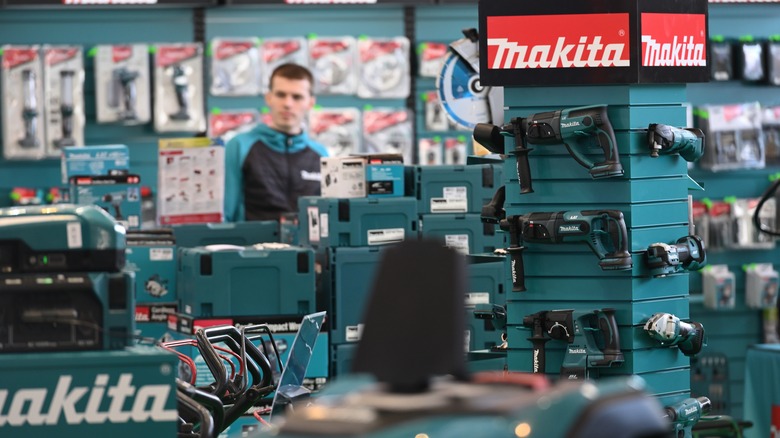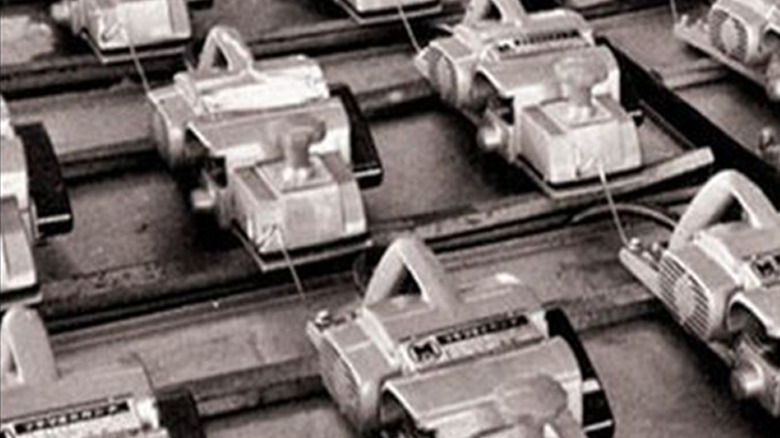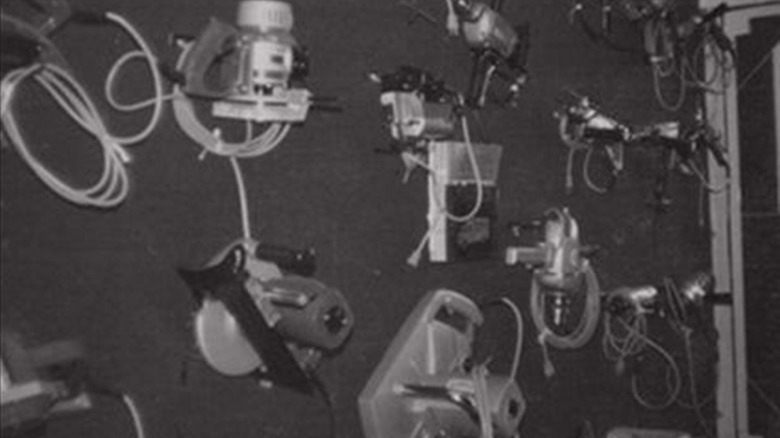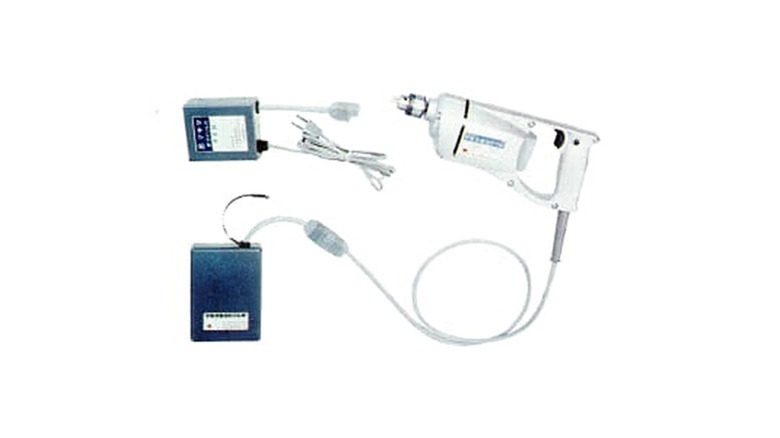4 Of The Earliest Tools In Makita History
We may receive a commission on purchases made from links.
Makita has been a household name in power tools for decades. Since 1958, in fact, when the company produced its first power tool — a portable electric planer. But the history of Makita can actually be traced back a few decades further. It was in 1915 that the company was formed in Nagoya, Japan. Initially, Makita focused on the sale and repair of motors, transformers, and lighting equipment. This was in 1915, remember. While electricity was hardly a new technology, it was just beginning to fill the many roles we now take for granted, so this was cutting-edge for its day. The company remained focused on this side of the business until a fateful day in 1958 when the first electric planer came off the Makita production line. The rest, as they say, is history. From a single factory in Japan, Makita now builds power tools across the globe and boasts a range of options that includes cordless drills, sawing tools, screwdrivers, grinders and sanders, and many more.
By virtue of being the first-ever power tool Makita produced, its portable electric planer is a shoo-in for our list of four of the earliest tools in Makita history. From early rechargeable tools to pneumatic nailers, the company has never shied away from innovation. Let's have a look at some of the brand's early tools and the impact they had on the industry as a whole.
The Model 1000 plane — a legend is born
The first-ever power tool that Makita produced was its electric planer. Designed to help shape wood, it ended up doing more than that — it shaped the destiny of the company. Released in 1958, the Model 1000 120-millimeter portable hand planer marked a change in the business' direction that saw it become one of the most globally recognized names in the power tool sector. The success of the model soon spread outwith the Japanese market, with the company exporting 1,300 of the hand-held planers to Australia the following year.
The original planer is widely regarded as the forerunner to today's 3 ¼-inch models that can still be found in toolkits around the world. Indeed, when you compare a modern equivalent like the Makita XPK01Z 18V LXT cordless planer to the original design, the shared DNA between them is immediately apparent. The configuration and layout of the tool remain incredibly close to the original specifications, proving just how well Makita's engineers did when their product "smoothed" the company's transition to the power tools market.
Makita portable groove cutter
Not a company to rest on its laurels, 1958 also saw it release its second power tool — the portable groove cutter. Unfortunately, there is very little known about the product, and few images of it exist. However, the product did help cement Makita's place as primarily a manufacturer of power tools. The Model 3000 groove cutter (often referred to as a wall chaser) was designed to efficiently cut grooves, dados, and rabbets. These tasks previously required more time-consuming manual methods.
While details of the original model remain sketchy, its legacy can be seen in subsequent models like the 3800N-A and current models like the Makita 3501N groove cutter. Rather than being a dedicated groove cutter, the current iteration is a combination of a circular saw and groove cutter. Along with the planer, these models were to represent the entirety of the Makita tools range into the early '60s. But they were enough to drive the company's move into a manufacturer of electric power tools, a transition that was all but complete by 1959.
Makita Model 6000 electric drill
While 1958 was a busy year for Makita with the release of its first two electric power tools, the next few years were a development period that saw the company rely on its existing product range. Development was incredibly fruitful, and by 1962, Makita was ready to release its third and fourth products. The Model 6000 electric drill was one of these products (the other was the first Makita electric circular saw). Again, details on the precise specifications of the product are difficult to verify, but the fact that Makita had moved from being a company on the verge of bankruptcy in 1955 to being completely debt-free by 1963 is a strong testament to the success of these pioneering tools.
This was by no means the first electric drill. The first portable electric drill appeared in 1916, and larger stationary drills had been around much longer. But it did represent the next step for Makita and laid the groundwork for them shifting from a little-known Japanese manufacturer to becoming one of the world's major power tool brands.
Model 6500D battery-powered drill
For the next tool, we fast forward a few years to 1969. Although there were other tools added to the Makita line between 1962 and then, the next tool is highly significant — the world's first rechargeable power tool. The Makita 6500D changed the way we thought about power tools. No longer only useful where there was a power outlet handy, these tools freed workers from the need to be within a "flex-length" of an electric socket. As the image shows, the batteries for the tool were separate from its body, and it looks somewhat rudimentary. Regardless, it signified a shift that would shape the future of the entire industry. Although the battery cords meant that this wasn't a true cordless drill, it was certainly a huge evolutionary step on the route to the technology.
The convenience that cordless operations brought to the table cannot be overemphasized. Nowadays, the majority of power tools are cordless and rechargeable, with the corded tools being the exception rather than the rule. Of course, things have moved on from the trailblazing 6500D. Current models like the Makita XPH10Z 18V LXT Lithium-Ion model are truly cordless and use the company's 18V LXT battery system, one of the main Makita battery types available in the U.S. To see how far the company has come since its first electric tool, it's worth noting that the LXT battery system has over 350 products in the line.




